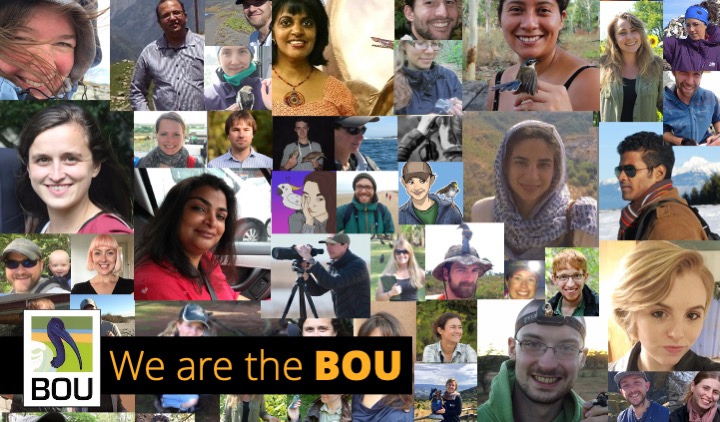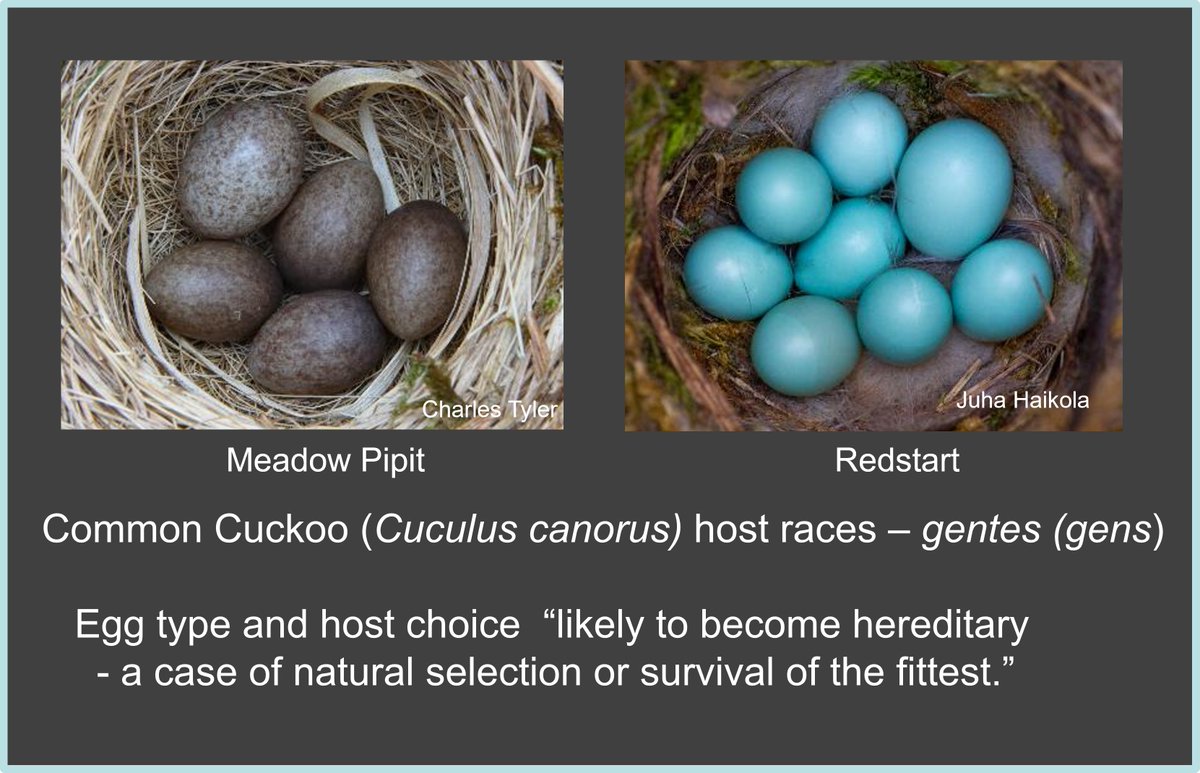It’s time for another #ORNITHOLODAY! Tweeting today are @hemmingsnicola1, members of her @sheffieldAPS team including @fay_morland, and collaborators @ZSLScience @kikaB8 & @Belfast_Ash9 (we’ll introduce ourselves properly shortly!) #ornithology #teamegg
@HemmingsNicola1 @SheffieldAPS @fay_morland @ZSLScience @KikaB8 @Belfast_Ash9 Today’s #ORNITHOLODAY is all about #eggs! #oology #ornithology #teamegg 

We’ll be delivering dozens of amazing egg facts throughout the day (08:00-15:00 UTC) #ORNITHOLODAY #teamegg
We’ll also be talking about our research on why eggs fail - including demos of how to examine unhatched eggs live from our @sheffieldAPS lab! #ORNITHOLODAY #teamegg 

All our tweets will have the hashtags #ORNITHOLODAY #teamegg so you can follow us throughout the day for lots of #ornithology & #oology fun!
We’re happy to answer any questions you have throughout the day, & feel free to follow our personal accounts if you want to keep up with our work in the future: @HemmingsNicola1 @fay_morland @kikaB8 @Belfast_Ash9 #ORNITHOLODAY #teamegg
First, some introductions… #ORNITHOLODAY #teamegg
First up it’s me, Dr Nicola Hemmings @HemmingsNicola1. I’m a @royalsociety Dorothy Hodgkin Research Fellow @sheffieldAPS studying bird reproductive behaviour & physiology. I’m particularly interested in the causes of hatching failure in birds #ORNITHOLODAY #teamegg 

I’m also mum of two baby girls, who are already starting to develop their ornithological identification skills #ORNITHOLODAY #teamegg 
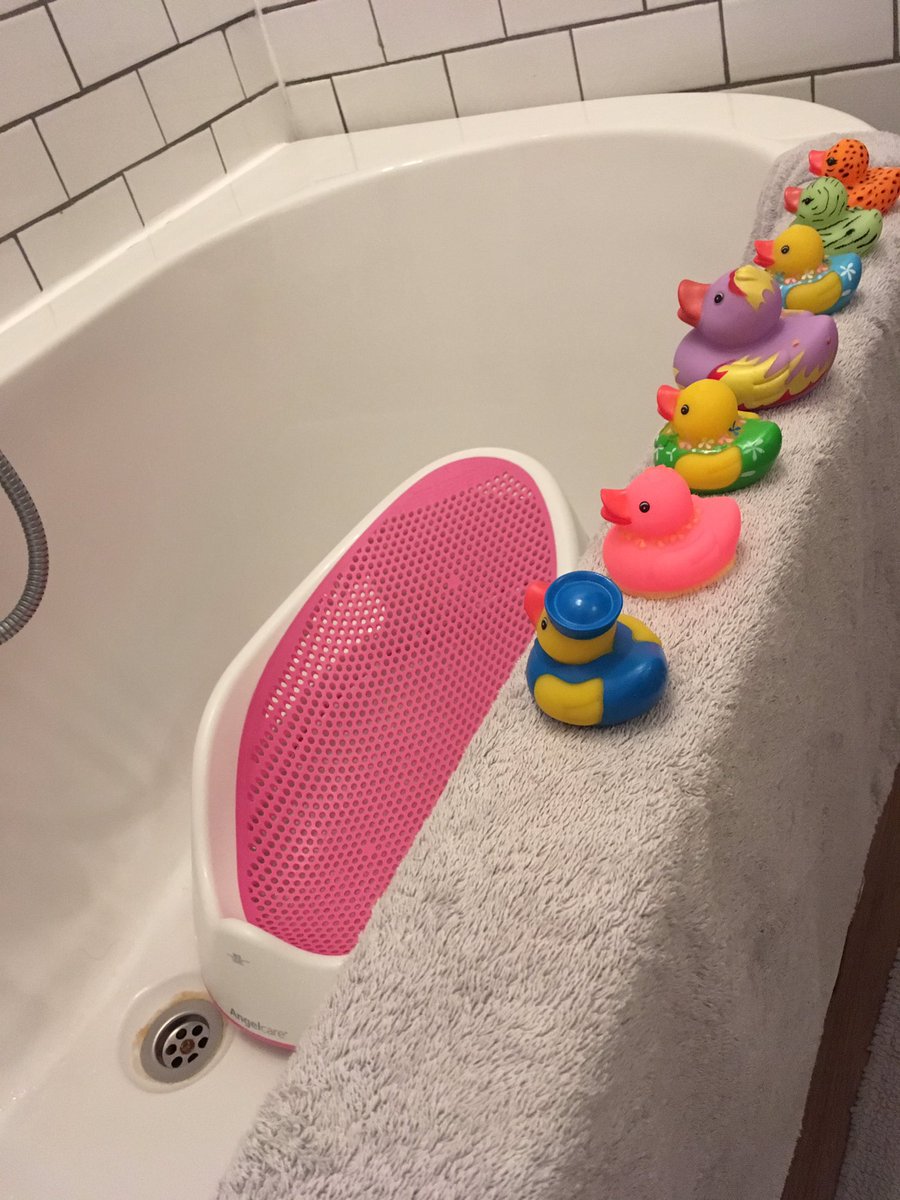
My @sheffieldAPS group includes two PhD students, @fay_morland & Duncan Jackson, @kassersohn who recently completed her Masters & starts her PhD in Sept, research technician Paul Richards, & post-doctoral researcher @JL_Savage #ORNITHOLODAY #teamegg
Find out more about my team & what we all do here nicolahemmings.wordpress.com/people/ #ORNITHOLODAY #teamegg
I also co-supervise PhD student @Belfast_Ash9 in collaboration with @ZSLScience Research Fellow Dr Patricia Brekke @kikaB8, who I’ll hand over to next! #ORNITHOLODAY #teamegg
Hi I’m Dr Patricia Brekke (@KikaB8), I am a research fellow in conservation biology @ZSLScience. Fascinated by the natural world and how to preserve it. @OfficialZSL #ORNITHOLODAY #teamegg 

I apply evolutionary genetics concepts and tools to conservation issues. @KikaB8 @OfficialZSL @ZSLScience #ORNITHOLODAY #teamegg #ornithology #conservation
My main model system is an amazing NZ bird called the hihi or stitchbird. I have been studying this little “ray of sunshine” for 15 years. @KikaB8 @OfficialZSL @ZSLScience #ORNITHOLODAY #teamegg
Hihi have high levels of hatching failure ~ third of their eggs fail to hatch. @KikaB8 @OfficialZSL @ZSLScience #ORNITHOLODAY #teamegg
When you have only a few thousand of these incredible birds left in the world EVERY egg counts! @KikaB8 @OfficialZSL @ZSLScience #ORNITHOLODAY #teamegg #conservation
Hihi were once common in NZ but only one natural population left. Seven reintroduced pops have been established as part of its recovery program. @hihinews @KikaB8 @OfficialZSL @ZSLScience #ORNITHOLODAY #teamegg Image credit: ZSL 

Also contributing to the #teamegg #ornitholoday today is @fay_morland, @royalsociety funded PhD student @sheffieldAPS #ORNITHOLODAY #teamegg
Hello! I’m Fay @fay_morland and I’m in the 1st year of my @royalsociety funded PhD project with @HemmingsNicola1 & @KikaB8 at @sheffieldAPS & @ZSLscience on hatching failure in the #hihi, a bird endemic to New Zealand. @hihinews #ORNITHOLODAY #teamegg Photo: Eric Wilson 

#Hihi are a @IUCN vulnerable species and we hope that studying causes of hatching failure in this bird will help us improve #conservation strategies for the hihi and other threatened and inbred species #ORNITHOLODAY #teamegg
I use genetic, behavioural and environmental data to study causes of hatching failure. My #PhD has been full of learning new field & lab skills such as DNA extractions with @KikaB8, microscopy with @HemmingsNicola1 & bird ringing with @SorbyBreckRG #ORNITHOLODAY #teamegg 





I can’t wait for my first field season on #TiritiriMatangi island working with @MhairiMcReady of @docgvtnz to get my head around the problems the #hihi face! But for now, find me in the lab examining formalin preserved hihi eggs #ORNITHOLODAY #teamegg 

Finally, @ZSLScience PhD student @Belfast_Ash9 will also be tweeting about her work throughout the day... #ORNITHOLODAY #teamegg
Hi! I’m Ashleigh @Belfast_Ash9, a 1st year @London_NERC_DTP PhD student @ZSLScience and @UCL looking at hatching failure in managed populations. As well as @KikaB8 & @HemmingsNicola1, I am supervised by Prof Francois Balloux (@BallouxFrancois) @UGI_at_UCL #ORNITHOLODAY #teamegg
As part of my research I am examining unhatched eggs from UK populations, including @OfficialZSL, to investigate why some eggs don’t hatch. I'll also be using long-term zoo records as part of an interspecific meta-analysis of hatching failure #ORNITHOLODAY #teamegg 

In May I spent time @sheffieldAPS meeting everyone & learning methods I will be using in my #PhD (more on those later!). I spent lots of time in the lab, had a session on bird ringing, & enjoyed exploring Sheffield & the Peak District #ORNITHOLODAY #teamegg Photo: @fay_morland 

In Sept I am travelling to New Zealand for fieldwork, visiting some of the fantastic conservation programmes there & collecting data on some of their amazing bird species, including kakī & tuturuatu with @testeeves & the #ConSERTeam, more on this later! #ORNITHOLODAY #teamegg
We’ll also introduce some other colleagues and collaborators later. Some are not on Twitter but have kindly provided information & images for us to share with you today! #ORNITHOLODAY #teamegg
Now a little about where we work, @sheffieldAPS & @ZSLScience - two fantastic places for studying #ornithology & #oology #ORNITHOLODAY #teamegg
The Zoological Society of London (ZSL, @officialZSL) is steeped in ornithological history. Charles Darwin became a Fellow here in 1837, donating most of his bird, nest and egg collections to the then museum of ZSL @ZSLLibrary #ORNITHOLODAY #teamegg
ZSL’s first curator John Gould together with his wife Elizabeth Gould catalogued and classified #Darwin’s Beagle expedition bird specimens @ZSLLibrary #ORNITHOLODAY #teamegg #ornithology #history
The @ZSLlibrary still holds some of the most globally important texts and illustrations of birds and eggs. The oldest egg book in our collection is from 1737 by Giuseppe Zinanni @ZSLLibrary #ORNITHOLODAY #teamegg zsl.org/blogs/artefact… Image credit: @ZSLLibrary 

If you want to see more egg literature our library is open to the public @ZSLLibrary (zsl.org/about-us/zsl-l…) #ORNITHOLODAY #teamegg
Here are some beautiful illustrations of the Great Auk from @ZSLlibrary - egg collectors contributed to this species extinction in 1844 and highlights some of the threats birds still face today #ORNITHOLODAY #teamegg Image credit: @ZSLLibrary 
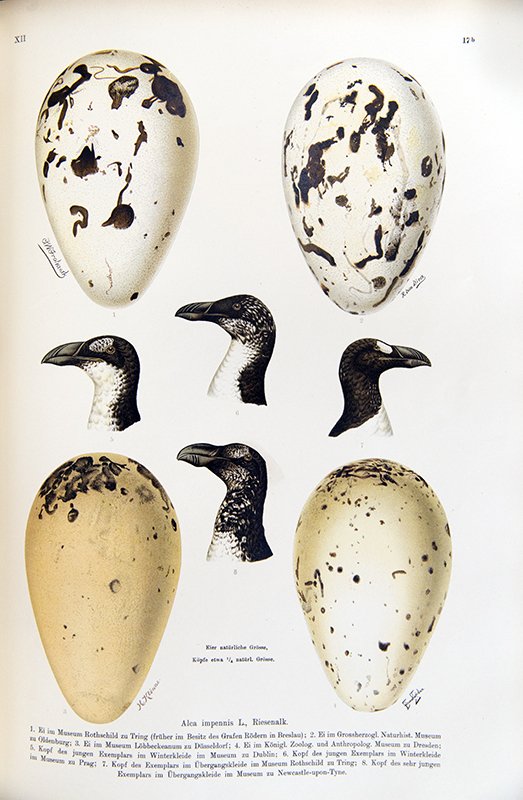
At @OfficialZSL and @ZSLScience our emphasis is the #conservation of threatened birds by developing captive breeding programmes and the science behind the conservation and management of wild threatened bird species. #ORNITHOLODAY #teamegg
#teamegg tweeters @kikaB8 & @Belfast_Ash9 are based @ZSLScience, while @HemmingsNicola1 & @fay_morland are at @sheffieldAPS @sheffielduni - another wonderful department for #ornithology research #ORNITHOLODAY
A walk down @sheffieldAPS’s corridors looking at the research posters says it all! #ORNITHOLODAY #teamegg #ornithology 



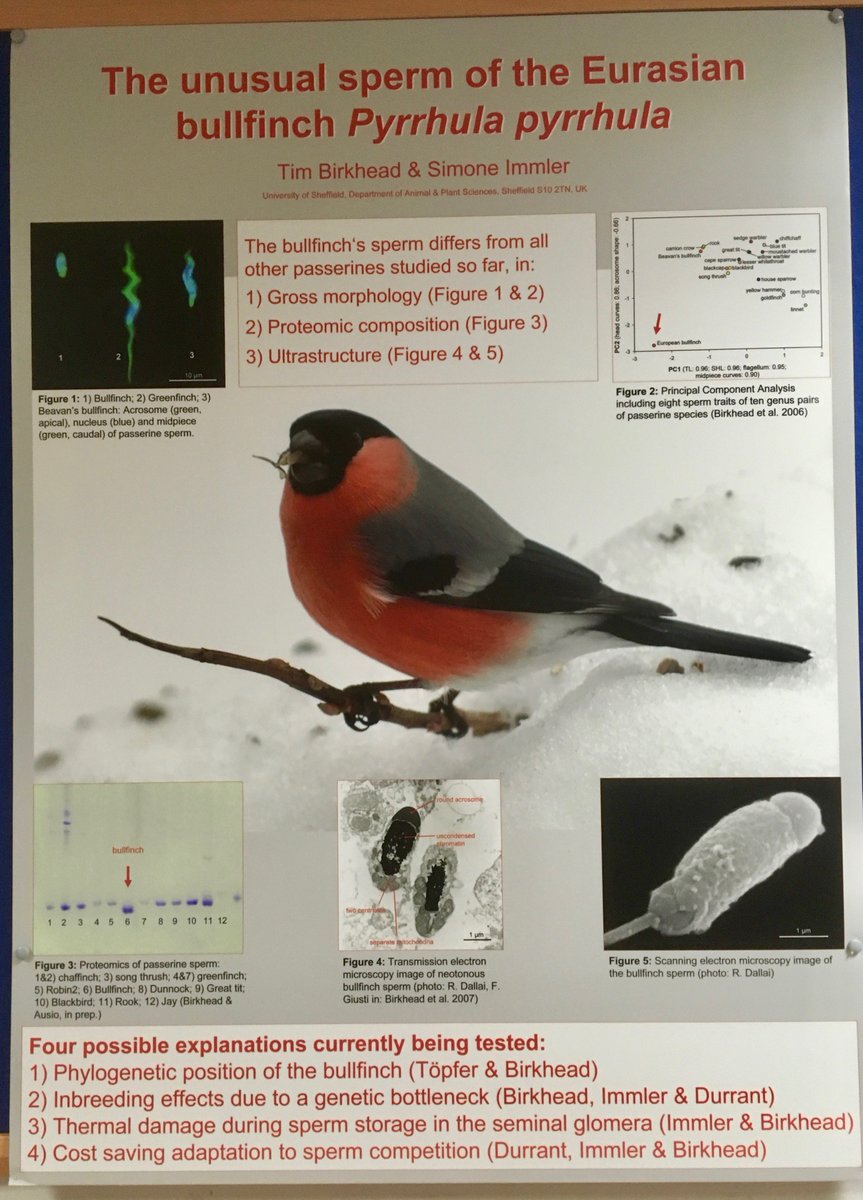

We also have the fantastic @ADMSheffield with its own beautiful historic egg collections @sheffieldAPS - come visit us! sheffield.ac.uk/alfred-denny-m… #ORNITHOLODAY #teamegg
It’s a fantastic place for an ornithologist to work, which is perhaps why Nicola has stayed for 16+ years, ever since her undergraduate degree! @sheffieldAPS #ORNITHOLODAY #teamegg
Later today, we’ll be showing you 1st-hand how we investigate the causes of hatching failure in our @sheffieldAPS lab. Before that, we want to share just how awesome bird eggs are #ORNITHOLODAY #teamegg
So grab a tea & get ready for some egg-cellent facts coming up at 10:30 BST (09:30 UTC)! #ORNITHOLODAY #teamegg
[ADMIN] Sadly the exaction of the Great Auk pre-dates @IBIS_journal (and we're 160 years old!), but in the early years we published several papers on Great Auks and their eggs onlinelibrary.wiley.com/action/doSearc… | #ORNITHOLODAY #ornithology #oology
[ADMIN] We've got several papers on the Hihi in @IBIS_journal's 160-year archive onlinelibrary.wiley.com/action/doSearc… | #ORNITHOLODAY #ornithology #oology
#Bird #eggs are special. They contain everything the embryo needs to develop from start to finish. Self-contained life-support systems. #ORNITHOLODAY #teamegg Photo: @HemmingsNicola1 

#Bird #eggs are also incredibly diverse in shape, size, colour, & pattern. This isn't just random variation (figure from science.sciencemag.org/content/356/63…) #ORNITHOLODAY #teamegg 

Eggs are a huge investment for female birds. Just take a look at this X-ray of a kiwi carrying her complete, shelled egg. This kiwi would laugh at human childbirth. Image source: audubon.org/news/why-kiwis… #ORNITHOLODAY #teamegg 
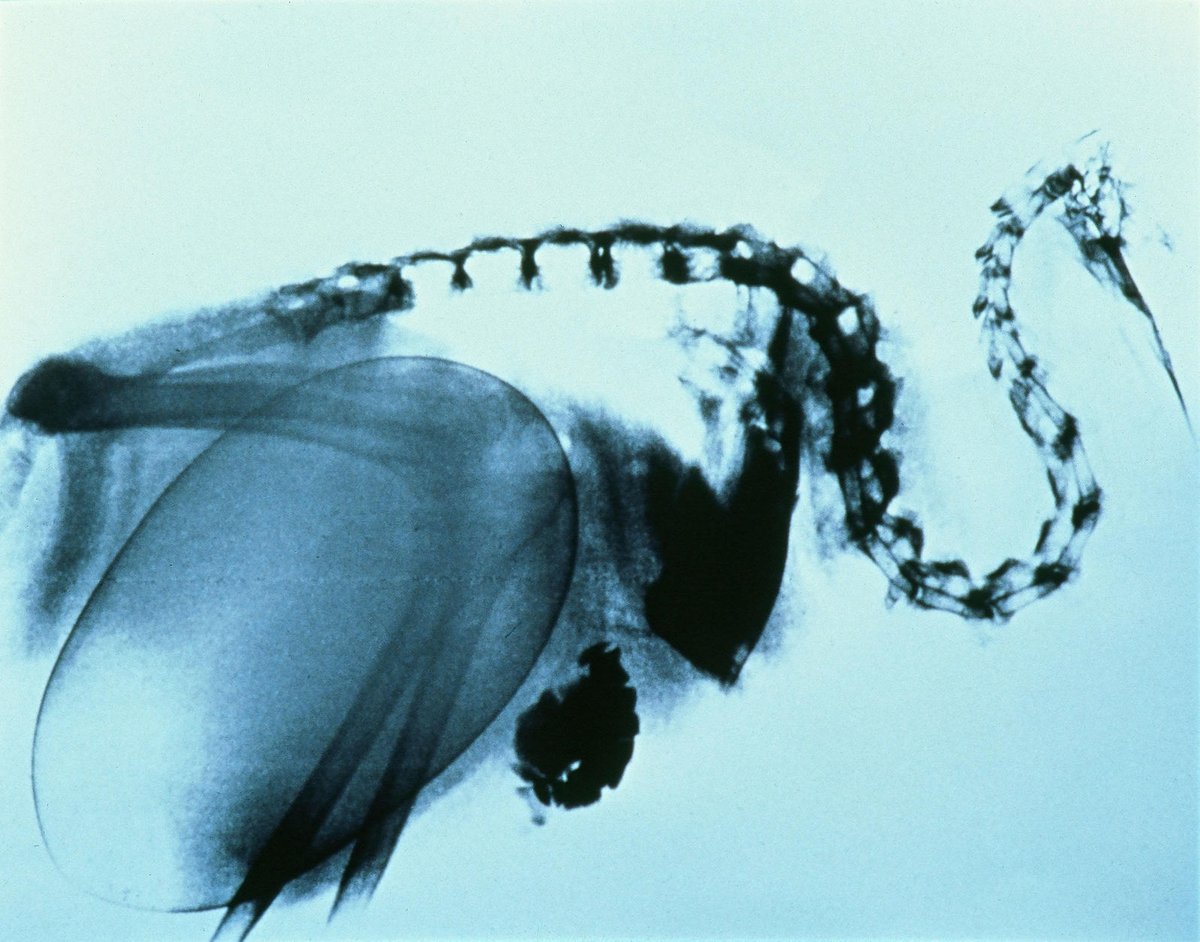
In fact, kiwi eggs represent 20% of the female’s entire body weight. This is the largest ratio in any bird #ORNITHOLODAY #teamegg Video: @Kika_B8
*extinction 😒
The smallest female to egg ratio comes from the largest bird: ostrich eggs are just 2% of the female’s body weight! #ORNITHOLODAY #teamegg
The now extinct elephant-bird eggs dwarf kiwi, ostrich, and even moa eggs at a whopping 33 x 24 cm in size! Want to know more about elephant-birds check out the work of @JamesHansford5 @ZSLScience @OfficialZSL #ORNITHOLODAY #teamegg
Birds only make a single egg at a time, & it usually takes just 1 day from release of the ovum (or yolk) from the ovary to the fully hard-shelled egg being laid #ORNITHOLODAY #teamegg
There are exceptions to this - some #cuckoos for example, produce an egg every 2 days, retaining their eggs inside their reproductive tract for an additional 24h to give the embryo a developmental ‘boost’ royalsocietypublishing.org/doi/full/10.10… #ORNITHOLODAY #teamegg
Do you know how the egg is put together inside a female bird’s reproductive tract? You’re about to find out! #ORNITHOLODAY #teamegg
First, the ovum - or yolk - is released from the ovary. Prior to ovulation, yolk is built up in individual follicles in the ovary, which ends up looking like a big bunch of orange grapes #ORNITHOLODAY #teamegg 

Sitting as a tiny target on the relatively massive yolk is the germinal disc. This looks like a white dot, & it contains the female genetic material. Look closely next time you crack open a chicken egg - you'll spot it #ORNITHOLODAY #teamegg Photo: @HemmingsNicola1 

The newly ovulated ovum is surrounded by the "inner perivitelline layer", essentially a bag that holds the yolk together. In order to fertilise the egg, sperm must penetrate this layer & enter the ovum #ORNITHOLODAY #teamegg
Lots of sperm usually penetrate & enter a bird's ovum. This is what the inner perivitelline layer looks like under the microscope after sperm have dissolved their entry holes to get in. Entry of multiple sperm into the ovum is called polyspermy #ORNITHOLODAY #teamegg 

Polyspermy in birds is different to polyspermy in mammals (including us), where the egg can be destroyed if multiple sperm enter #ORNITHOLODAY #teamegg
In birds, polyspermy is actually NEEDED for normal embryo development - only one sperm is required for fertilisation, but more than one sperm must reach the germinal disc in order for the resulting zygote to survive rspb.royalsocietypublishing.org/content/282/18 #ORNITHOLODAY #teamegg
Just 15 min after ovulation, a second layer begins forming around the yolk. This "outer perivitelline layer" is made up of glycoproteins secreted from the female's reproductive tract #ORNITHOLODAY #teamegg
The glycoprotein layer essentially 'glues' all sperm present at the site of fertilisation onto the yolk. If you take a fertilised egg yolk & remove this layer, you can see all the trapped sperm under the microscope! #ORNITHOLODAY #teamegg 

Next time you puncture an egg yolk with your fork, it's this layer you're breaking to allow the yolk to ooze out. If you cut the yolk in half with scissors, pick up 1 half & wash the yolk off with water, the perivitelline layer is what you are left with #ORNITHOLODAY #teamegg
We’ll show you how to do this later when we demo some egg dissections live from the lab! #ORNITHOLODAY #teamegg
Once the outer perivitelline layer is formed, sperm can no longer penetrate the egg. If the ovum isn't fertilised in that 15min window, it will remain unfertilised #ORNITHOLODAY #teamegg
Regardless of whether or not the ovum is fertilised, once there is a yolk in the oviduct, egg formation will proceed. This is why we have tonnes of unfertilised chicken eggs lining our supermarket shelves #ORNITHOLODAY #teamegg 

Unfertilised eggs can show embryo development – parthenogenesis occurs frequently in birds and reptiles e.g. komodo dragon at London zoo @ZSLScience @ZSLOfficial & zebra finches @sheffieldAPS onlinelibrary.wiley.com/doi/abs/10.111… #ORNITHOLODAY #teamegg
After the outer pervitelline layer is formed, the egg then begins its journey down the long, winding reproductive tract of the female, gaining albumen, shell membranes, fluids & more, & beginning to acquire its egg-like shape #ORNITHOLODAY #teamegg
The female, via her oviduct, provides all the egg's vital ingredients #ORNITHOLODAY #teamegg
Shell formation begins only once the egg reaches the uterus (which looks like a swollen purple pouch). If you want to know what an egg looks & feels like before the shell forms, pop one in some vinegar & find out! imaginationstationtoledo.org/educator/activ… #ORNITHOLODAY #teamegg
The egg spends around 6 hours in the uterus, as a protective layer of calcium carbonate is built up across the shell membrane surface #ORNITHOLODAY #teamegg
Shell thickness varies markedly across birds. Moa eggs are thin-shelled: even the largest have shells thinner than 2 mm, whereas ostrich eggshell is about 2 mm thick and that of the elephant-bird may exceed 4mm. Photo: @zsllibrary #ORNITHOLODAY #teamegg 

Tiny gaps exist between the columns of calcium carbonate that make up the shell. These are not flaws - these pores are crucial for gas exchange. Without them, the embryo wouldn't get enough oxygen #ORNITHOLODAY #teamegg Image: The balancing act - Ostrich egg by Johanna Arenas 

The shell is also coated with a layer of proteins & lipids, crucial for strength, waterproofing, & antimicrobial defence #ORNITHOLODAY #teamegg
Some eggs are also pigmented at this point - there are a huge array of colours and patterns, both within & across species #ORNITHOLODAY #teamegg Photos: @HemmingsNicola1 

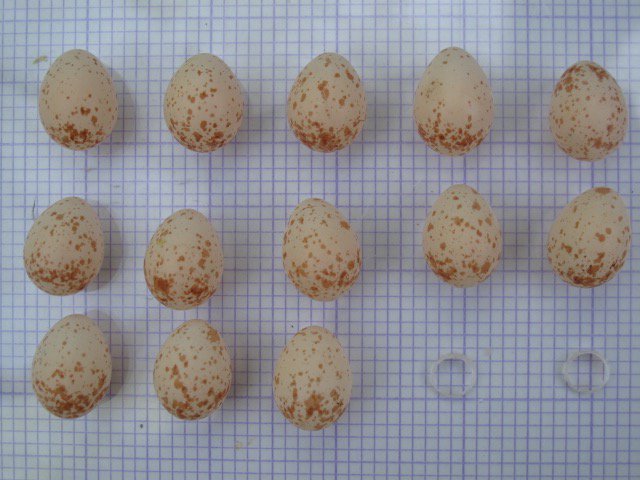

During shell formation, the egg probably turns in the uterus. This isn't 100% verified, but evidence from scans of birds during egg production suggests so. Plus, it's likely the egg enters uterus pointy end first, but eggs are usually laid blunt end first #ORNITHOLODAY #teamegg
Within just a couple of hours of the egg being laid, the next ovum is ovulated, & the whole process starts again. This is repeated until the bird has completed her clutch #ORNITHOLODAY #teamegg
Did you know birds can have twins? It’s rare, but #hihi twins were found in 2004 onlinelibrary.wiley.com/doi/abs/10.111… @informedbird @hihinews @ZSLbirds @ZSLOfficial #ORNITHOLODAY #teamegg Photo: R.Thorogood 

Those hihi twins didn’t survive to hatch, but other avian twins have done (albeit rarely) - including one case of genetically identical emu twins! cambridge.org/core/journals/… #ORNITHOLODAY #teamegg
Hopefully we’ve persuaded you that #eggs are amazing (as if you needed persuading)! Now for a bit more of a focus on our own current research #ORNITHOLODAY #teamegg #ornithology #oology
A key aim of our work is to understand the causes of hatching failure in birds #ORNITHOLODAY #teamegg #ornithology #oology #conservation
Hatching failure is a surprisingly common problem for birds #ORNITHOLODAY #teamegg
Hatching failure occurs in ALL bird species - on average, around 10% of all bird eggs fail to hatch (excluding those lost to predation/desertion) #ornitholoday #teamegg
Rates of hatching failures across bird species were first reviewed by Walter Koenig (1982) pdfs.semanticscholar.org/59be/fb3eda0ab… #ORNITHOLODAY #teamegg
There is huge variation in hatching failure rates across species & populations, with hatching failure exceeding 60-70% in some endangered birds #ORNITHOLODAY #teamegg #conservation
Despite the importance of hatching failure for conservation efforts, the mechanisms underlying egg failure are poorly understood #ORNITHOLODAY #teamegg
Here in our lab, we start from a fundamental question - is hatching failure due to fertilisation failure or embryo death? #ORNITHOLODAY #teamegg
Fertilisation failure tells us that there was some problem with sperm reaching or penetrating the egg #ORNITHOLODAY #teamegg
Embryo death tells us that sperm got there fine, fertilisation took place, but then something else caused the zygote/embryo to stop developing #ORNITHOLODAY #teamegg
The factors driving these two causes of hatching failure are likely to be very different, so distinguishing between them is important. But it can also be quite tricky... #ORNITHOLODAY #teamegg
First, the germinal disc of an undeveloped egg often doesn’t look very different to that of an unfertilised egg - you only start seeing obvious signs of embryonic development after ~ 2-3 days of incubation #ORNITHOLODAY #teamegg
Second, unhatched eggs are usually collected from the field several days or even weeks after the other eggs in the nest hatched, which means their contents usually resemble a murky (& smelly) soup! Photo: @HemmingsNicola1 #ORNITHOLODAY #teamegg 

However, in our lab we’ve developed & refined methods to allow us to examine even the grottiest of eggs to determine their fertility status onlinelibrary.wiley.com/doi/abs/10.111… #ORNITHOLODAY #teamegg
Want to know how we do it? Join us in the lab at 13:00 for some live egg dissection action! We're heading off for an early lunch break now, but join us back here then to learn more! #ORNITHOLOGY #teamegg
We're back, & @HemmingsNicola1 & @fay_morland are in their @sheffieldAPS @sheffielduni lab assessing fertility status of unhatched eggs #ornithology #oology #ORNITHOLODAY #teamegg 

What do you need to examine an unhatched egg? Let us show you! #ORNITHOLODAY #teamegg
First, some basic dissection tools - fine forceps, scissors, dishes for putting egg contents in #ORNITHOLODAY #teamegg 

And no egg dissector's kit is complete without one essential homemade tool - the "hair-loop" #ORNITHOLODAY #teamegg 

Making these is a right of passage in @HemmingsNicola1's lab. Pluck a hair from your (or an unsuspecting lab mate's) head, form a small loop, & tape it to the end of a pipette tip. Simple! We'll show you what we use it for later #ORNITHOLODAY #teamegg
You'll also need: pipettes (P20 & P200 essential, full set of sizes is desirable)... #ORNITHOLODAY #teamegg
...phosphate buffered saline solution (PBS)... #ORNITHOLODAY #teamegg
...& microscope slides, sample tubes, etc #ORNITHOLODAY #teamegg
In terms of lab equipment, you'll need a stereomicroscope ideally with gooseneck lighting - here are ours #ORNITHOLODAY #teamegg 


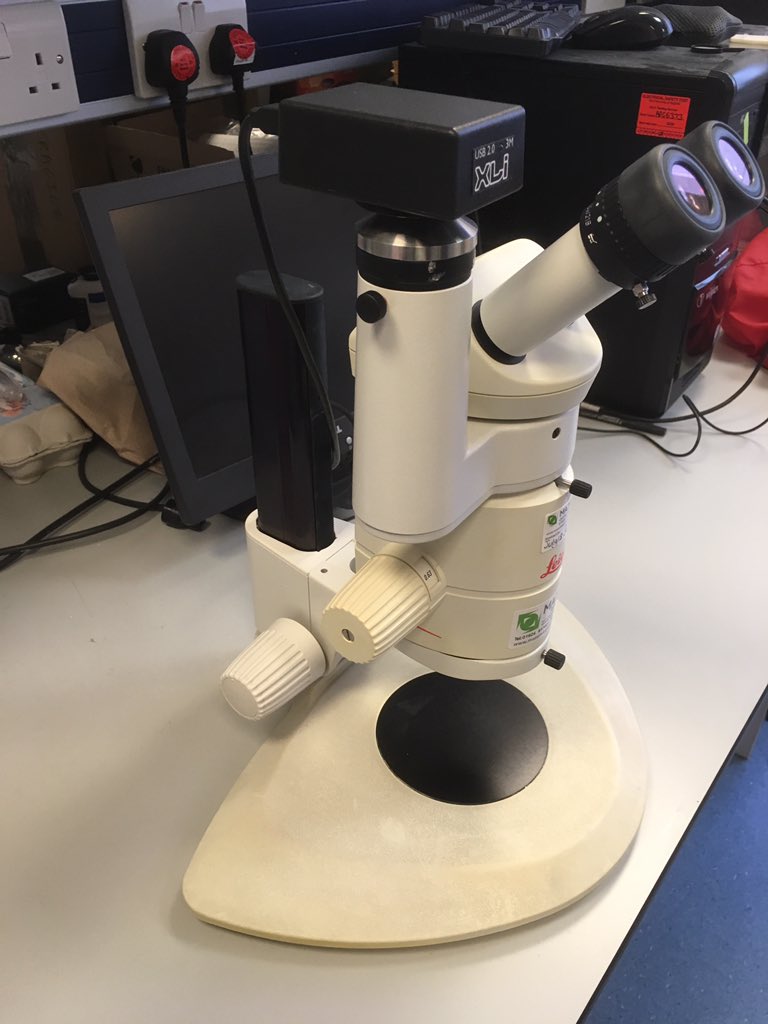
Open the egg & pop the yolk into a dish with some PBS #ORNITHOLODAY #teamegg
Locate the germinal disc (GD) - as we mentioned earlier, it’s a fairly conspicuous white spot on the yolk (ignore the bright spots either side reflecting from the lights, it’s the disc in the middle we're talking about) #ORNITHOLODAY #teamegg 

Now we need to cut through and remove the perivitelline layer (PVL) that surrounds the yolk. The yolk will start to collapse as soon as you cut it, so you have to go fast! #ORNITHOLODAY #teamegg
Technique here depends on egg size - with a large chicken egg you should aim to cut a section of PVL from above the GD. Smaller eggs like this zebra finch one can simply be cut in half #ORNITHOLODAY #teamegg
Once cut, carefully lift the PVL away from the yolk & put it into a clean dish of PBS. It'll be fine in there for a bit while you move onto the GD #ORNITHOLODAY #teamegg
Now for the germinal disc. Time for the first use of our bespoke hair-loop tool. Carefully slide the hair-loop under the GD & lift it away from the yolk #ORNITHOLODAY #teamegg
Under a stereomicroscope, use the hair-loop to gently flick away adhering yolk until you’re left with the isolated white germinal disc #ORNITHOLODAY #teamegg 
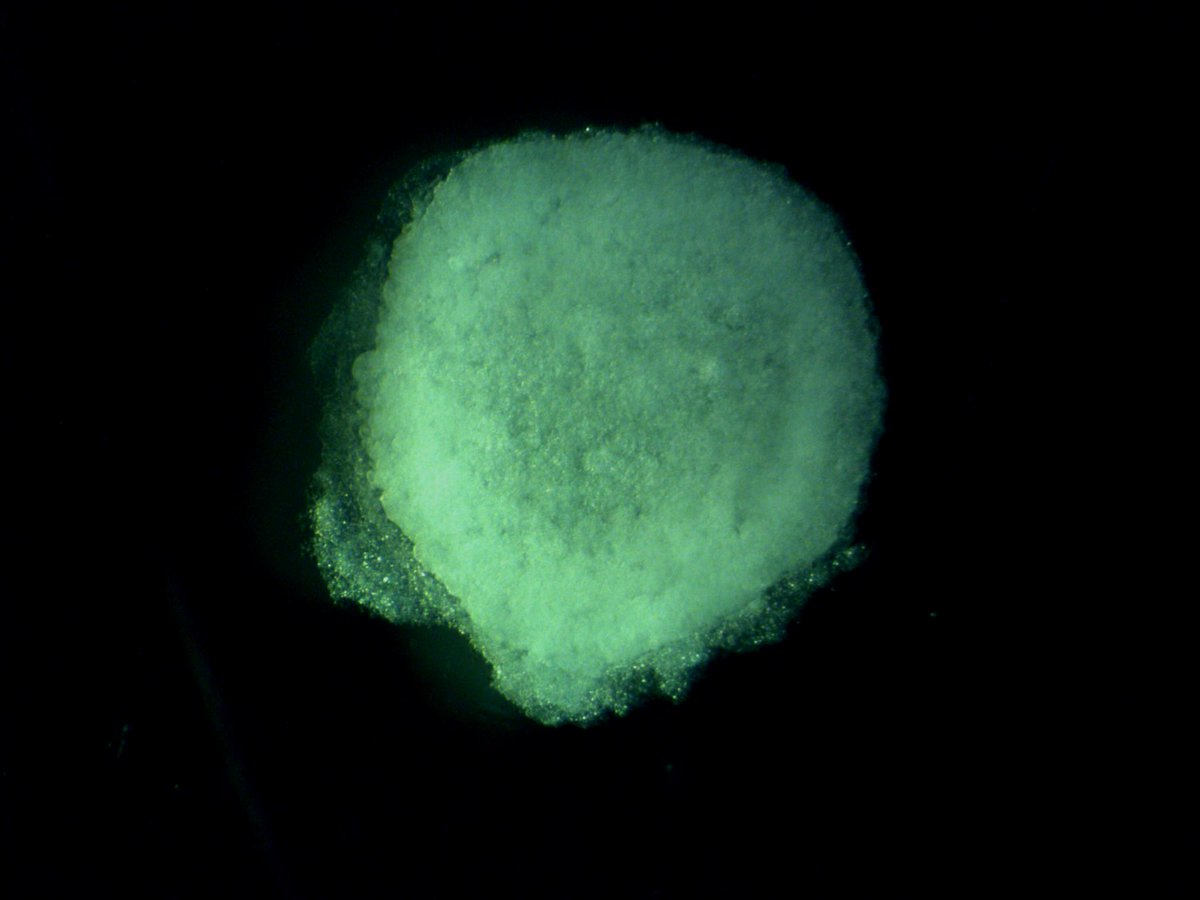
To check whether the GD contains embryonic cells i.e. was fertilised and started developing, pipette part or all of the GD onto a microscope slide, stain with Hoechst 33342, & view under a fluorescence microscope #ornitholoday #teamegg
The GD of a fertilised egg will contain thousands of cells even when it is freshly laid (cells have been dividing for almost 24 h before laying) #ORNITHOLODAY #teamegg
Stained with Hoechst & viewed under fluorescence, the nuclei of those cells shows up bright blue! You’re looking for numerous regularly shaped nuclei #ORNITHOLODAY #teamegg 

You can also use Hoechst stain to check for the presence of sperm on the perivitelline layer #ORNITHOLODAY #teamegg
Clean the PVL in PBS, using the hair-loop to flick away yolk until you’re left with what looks like a piece of clingfilm #ORNITHOLODAY #teamegg
This piece of PVL is actually both the inner and outer PVL stuck together. It can be useful to separate the two layers if you want to accurately count holes made by sperm entering the egg #ORNITHOLODAY #teamegg
For some species, it’s possible to separate the layers manually. Passerine eggs are particularly easy (example in video is zebra finch - apologies for faffing, it's not *that* easy!) #ORNITHOLODAY #teamegg
But it is easier than other (including chicken eggs), which require chemical separation #ORNITHOLODAY #teamegg
Spread the PVL onto a microscope slide - this takes some practice! Try to get the PVL as flat as possible without damaging it too much in the process #ORNITHOLODAY #teamegg
Add Hoechst on top of the PVL, leave to soak in for 5 mins, then view under the microscope - the heads of the sperm are packed with DNA, so they will stain bright blue #ORNITHOLODAY #teamegg 

Using darkfield microscopy you can also look for holes made in the inner PVL by sperm that entered the egg #ORNITHOLODAY #teamegg
Darkfield microscopy is a method that excludes unscattered beam from the image, creating a kind of negative of the brightfield image. Since the background is black, the black holes in the whitish PVL are very easy to spot #ORNITHOLODAY #teamegg 

What we've described so far is the most straightforward version of how to determine if an egg has been fertilised or not (note you can also use these methods to count how many sperm reached & penetrated eggs), with a nice fresh egg #ORNITHOLODAY #teamegg
Unfortunately, not all unhatched eggs are so straightforward #ORNITHOLODAY #teamegg
Most unhatched eggs we work with have been left in a hot, humid nest for several weeks, and have started to seriously deteriorate! #ORNITHOLODAY #teamegg 
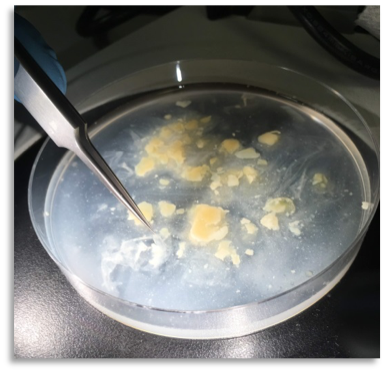
In addition, fertilised eggs have often developed for some time before they zygote/embryo died, and the greater the development, the worse the deterioration #ORNITHOLODAY #teamegg
In these cases, you need to become an expert at sifting through the smelly #egg soup to find something that might be useful. Luckily, #teamegg are experts in just that! #ORNITHOLODAY
The perivitelline layer rarely degrades completely (unless the embryo is well-developed), but it does split & break up, so finding fragments of PVL is sometimes the best we can do #ORNITHOLODAY #teamegg
However, because the germinal disc usually adheres to the perivitelline layer, this is often all we need to confirm if an egg has been fertilised - & to get an idea of how many sperm reached the egg #ORNITHOLODAY #teamegg
Fragments of PVL can be found by diluting egg contents in PBS &a carefully fishing through with forceps - the PVL readily sticks to the ends for forceps #ORNITHOLODAY #teamegg
It’s also very important to look carefully for small embryos. Even relatively well-formed but tiny embryos are easily missed during standard egg break-out, because they're often wrapped up in a bundle of PVL & just look like a blob! #ORNITHOLODAY #teamegg Photo: @Belfast_Ash9 

Indeed, the 'blob' slightly north-west of centre in this image was a tiny embryo wrapped up in a blanket of PVL! #ORNITHOLODAY #teamegg 

We hope you've enjoyed learning how to dissect unhatched eggs with @HemmingsNicola1 @fay_morland live from their @sheffieldAPS lab. We're taking a short break to tidy up now but back in approx. 30min to talk about the applications of our work. Stay tuned! #ORNITHOLODAY #teamegg
So how do we apply our techniques to real systems? We work with a number of threatened bird populations, helping to inform conservation teams by identifying the causes of hatching failure #ORNITHOLODAY #teamegg
As mentioned earlier, one of the main systems we work on to try to understand the causes of hatching failure in the wild is the #hihi in #NewZealand hihiconservation.com #ORNITHOLODAY #teamegg #conservation
Egg stage has the lowest survival rate of any stage in the #hihi’s development (nestling, fledging or adult) sciencedirect.com/science/articl… @hihinews @Kikab8 @ZSLScience #ORNITHOLODAY #teamegg Photo: Patricia Brekke 

Hihi suffer from around 30% hatching failure royalsocietypublishing.org/doi/full/10.10… Non-threatened species on average have 10% hatching failure @ZSLScience #ORNITHOLODAY #teamegg
#Hihi lay an average of four eggs but some females can lay up to six @hihinews @Kikab8 @ZSLScience #ORNITHOLODAY #teamegg Photo: @MhairiMcCready 

#Hihi incubate eggs for approx 14 days, which is similar to other small passerine birds @hihinews @Kikab8 @ZSLScience #ORNITHOLODAY #teamegg Photo: @MhairiMcCready 
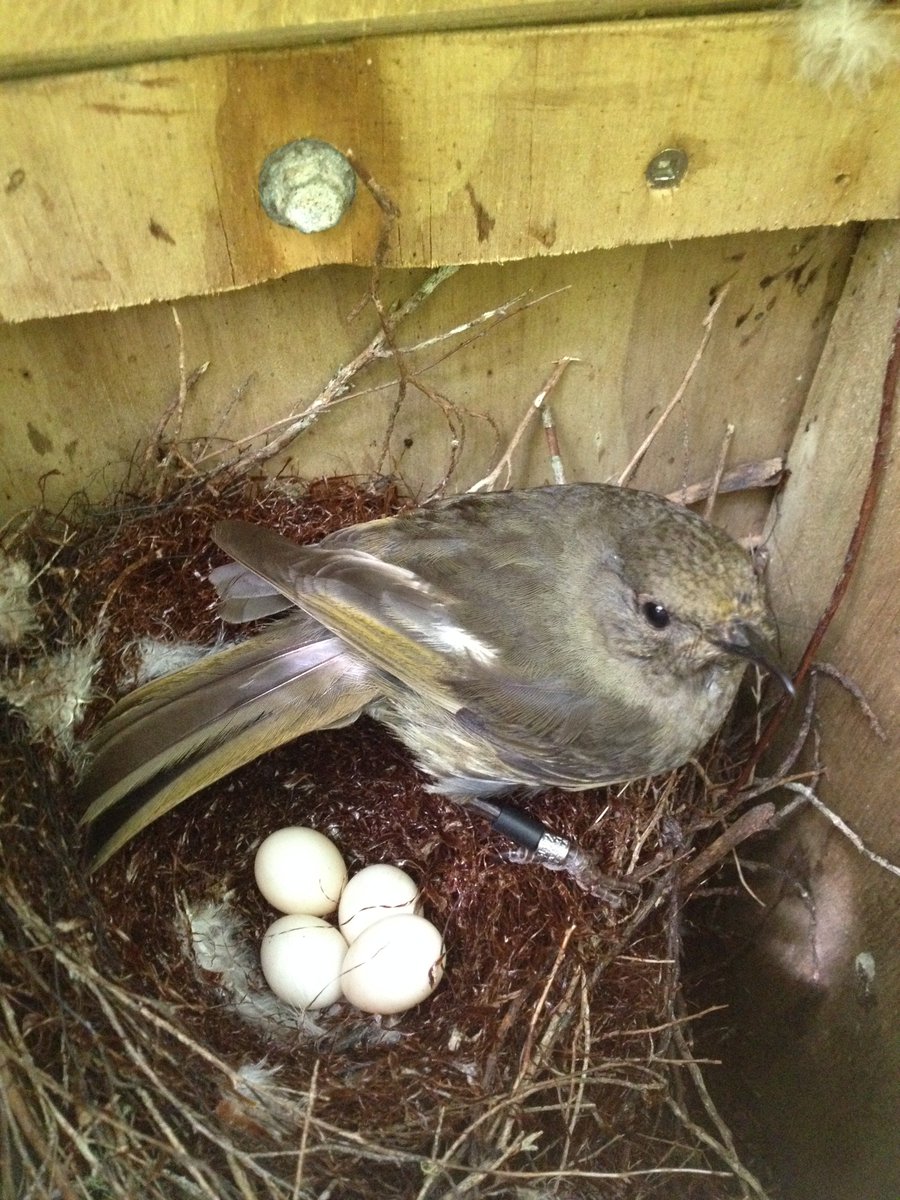
#Hihi embryo death tends to occur early in development up to five days post-laying besjournals.onlinelibrary.wiley.com/doi/full/10.11… royalsocietypublishing.org/doi/full/10.10… @hihinews @Kikab8 @ZSLScience @HemmingsNicola1 #ORNITHOLODAY #teamegg
Young and old females have higher levels of hatching failure besjournals.onlinelibrary.wiley.com/doi/full/10.11… sciencedirect.com/science/articl…) @hihinews @Kikab8 @ZSLScience #ORNITHOLODAY #teamegg
Second clutches or those laid later in the season are less likely to hatch sciencedirect.com/science/articl… @hihinews @Kikab8 @ZSLScience #ORNITHOLODAY #teamegg
Hihi, unlike other bird species, have not changed their lay dates to keep up with climate change onlinelibrary.wiley.com/doi/full/10.11… @hihinews @Kikab8 @ZSLScience @OfficialZSL #ORNITHOLODAY #teamegg
Clutch size, lay date and hatching success are not heritable – #hihi show little genetic variability in traits important to their survival sciencedirect.com/science/articl… onlinelibrary.wiley.com/doi/full/10.11… @hihinews @Kikab8 @ZSLScience @OfficialZSL #ORNITHOLODAY #teamegg
One contributor to hatching failure in hihi is inbreeding, which depresses embryo survival royalsocietypublishing.org/doi/full/10.10… @InvasionEcology @Pettorelli @hihinews @Kikab8 @ZSLScience #ORNITHOLODAY #teamegg
Male embryo hihi are particularly susceptible to inbreeding royalsocietypublishing.org/doi/full/10.10… @InvasionEcology @Pettorelli @hihinews @KikaB8 @ZSLScience #ORNITHOLODAY #teamegg
Most eggs fail in #hihi due to embryo death and this occurs mostly at early stages of development royalsocietypublishing.org/doi/full/10.10… @HemmingsNicola1 @hihinews @KikaB8 @ZSLScience #ORNITHOLODAY #teamegg
This is consistent with what we've found in another passerine species, the zebra finch, where close parental relatedness leads to more embryo death but does not impact fertilisation success nature.com/articles/ncomm… @HemmingsNicola1 @sheffieldAPS #ORNITHOLODAY #teamegg
#Hihi suffer from inbreeding due to small pop size and isolation, but also the effects of founding bottlenecks onlinelibrary.wiley.com/doi/abs/10.111… @Kikab8 @ZSLScience @OfficialZSL #ORNITHOLODAY #teamegg Image credit: ZSL 

Female hihi carrying eggs gain up to 43% in body weight - another example of extreme investment! sciencedirect.com/science/articl… Photo: @kika_B8 #ORNITHOLODAY #teamegg 

Egg yolk is yellow because it is full of carotenoids, vital antioxidants. Carotenoids in #hihi eggs are lutein (82%) and zeaxanthin (17%) sciencedirect.com/science/articl… Photo: Luis Lachica @hihinews @Kikab8 @ZSLScience #ORNITHOLODAY #teamegg 

If we artificially increase these carotenoids in the environment through supplementary feeding their concentration increases in the egg yolk sciencedirect.com/science/articl… academic.oup.com/beheco/article… @hihinews @informedbirds @kirstyjean @Kikab8 @ZSLScience #ORNITHOLODAY #teamegg
#Hihi egg hatch duration ranges from no delay (all eggs hatched within 2 hrs of each other) to 28 hrs, a mean of 10hrs sciencedirect.com/science/articl… @hihinews @informedbirds @kirstyjean @Kikab8 @ZSLScience Photo: @MhairiMcCready #ORNITHOLODAY #teamegg 

Larger #hihi broods take longer to hatch sciencedirect.com/science/articl… @hihinews @informedbirds @kirstyjean @Kikab8 @ZSLScience Photo: @MhairiMcCready #ORNITHOLODAY #teamegg 
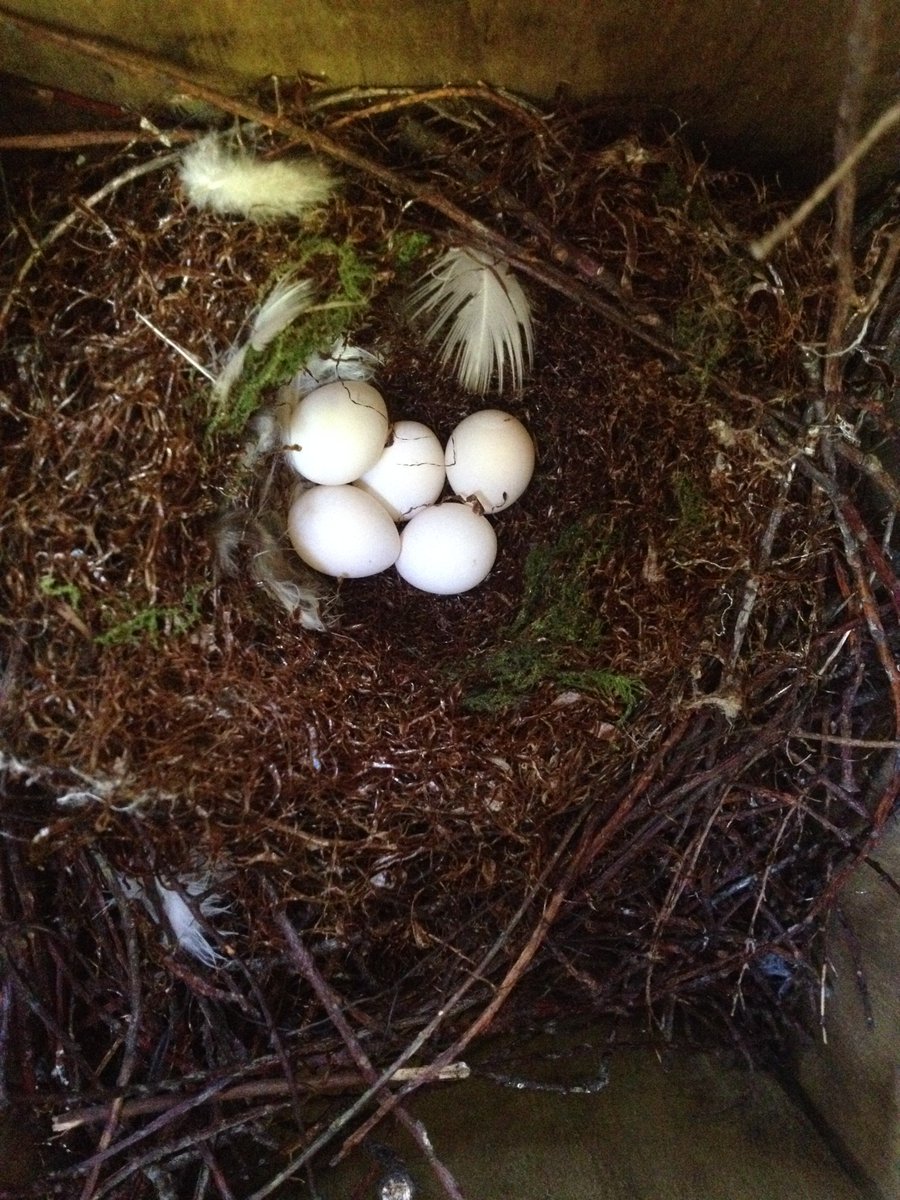
Female hihi cover the first two eggs of the clutch under a cap of nest-lining to prevent males from knowing their reproductive status sciencedirect.com/science/articl… onlinelibrary.wiley.com/doi/full/10.11… Photo: @MhairiMcCready @hihinews @Kikab8 @ZSLScience #ORNITHOLODAY #teamegg 

Males gain info on female fertility status by checking her nest for eggs. #Hihi have very high levels of promiscuity onlinelibrary.wiley.com/doi/full/10.11… Video: Patricia Brekke @hihinews @Kikab8 @ZSLScience #ORNITHOLODAY #teamegg
Female #hihi often have laying gaps during laying associated with male harassment and reductions in weight gain tandfonline.com/doi/abs/10.107… #ORNITHOLODAY #teamegg
This Sept, @sheffieldAPS student @fay_morland is starting her first of 3 field seasons on #TiritiriMatangi island, investigating variation in female fertility in hihi. We’re excited to see what she finds! #ORNITHOLODAY #teamegg
In the meantime, she’s enjoying ploughing through dissections of preserved unhatched #hihi eggs from the last TEN YEARS!!! #ORNITHOLODAY #teamegg
So that’s #hihi - what about the other species and conservation teams we work with? #ORNITHOLODAY #teamegg
When Belfast_Ash9 goes to NZ in Sept she will be collaborating with Dr Tammy Steeves @testeeves, Stephanie Galla @sgalla32, & Ilina Cubrinovska @NamesAreHard89 to examine hatching failure in early stages of development in kakī & tūturuatu #ConSERTeam #ORNITHOLODAY #teamegg
Kakī, also called black stilts, are classified as Critically Endangered on the @IUCNRedList, and Nationally Critical in the New Zealand Threat Classification System @sgalla32 @testeeves #ConSERTeam #ORNITHOLODAY #teamegg Photo: Liz Brown 

Kakī are monogamous and can form lifelong pairs, but if they can’t find a kakī mate they sometimes breed with poaka (pied stilt). While such hybridisation was an issue in the past it has been reduced by intensive management @sgalla32 @testeeves #ConSERTeam #ORNITHOLODAY #teamegg
Wild kakī lay a clutch of 3-6 eggs (usually 4) between Aug-Dec, with both parents incubating the eggs during the 24-27 day incubation period and looking after the precocial young until fledging @sgalla32 @testeeves #ConSERTeam #ORNITHOLODAY #teamegg
Some of the main threats to kakī are habitat loss, human disturbance, and predators (especially introduced mammals) @sgalla32 @testeeves #ConSERTeam #ORNITHOLODAY #teamegg
Kakī also experience about 28.4% hatching failure onlinelibrary.wiley.com/doi/full/10.11… @sgalla32 @testeeves #ConSERTeam #ORNITHOLODAY #teamegg
Management, captive-breeding & captive-rearing play key roles in kakī recovery. For example, collecting & artificially incubating wild eggs encourages pairs to lay multiple clutches per year @sgalla32 @testeeves #ConSERTeam #ORNITHOLODAY #teamegg Photo: Liz Brown | DOC 

Tūturuatu, also called shore plovers, are classified as Endangered on the @IUCNRedList and Nationally Critical in the New Zealand Threat Classification System @NamesAreHard89 @testeeves #ConSERTeam #ORNITHOLODAY #teamegg Photos: Dave Houston | DOC 



Tūturuatu are one of the world’s rarest shorebirds - in April 2019 there were 245 birds in total, of which 220 were wild & with more than half of these living in the Chatham Islands @NamesAreHard89 @testeeves #ConSERTeam #ORNITHOLODAY #teamegg
Tūturuatu are monogamous and lay a 2-3 egg clutch between Oct-Jan. During the 27-28 day incubation period the female mainly incubates the eggs in the daytime, but males take the night shift @NamesAreHard89 @testeeves #ConSERTeam #ORNITHOLODAY #teamegg
Introduced predators, in particular rats, are the main cause of tūturuatu declines, and like kakī they are also vulnerable to habitat loss and disturbance @NamesAreHard89 @testeeves #ConSERTeam #ORNITHOLODAY #teamegg
In addition, tūturuatu suffer from about 12.2% hatching failure onlinelibrary.wiley.com/doi/full/10.11… @NamesAreHard89 @testeeves #ConSERTeam #ORNITHOLODAY #teamegg
Island biosecurity, captive-breeding, & releases of captive-reared juveniles on to predator-free islands are all key parts of the @docgovtnz Shore Plover Recovery Plan @NamesAreHard89 @testeeves #ConSERTeam #ORNITHOLODAY #teamegg Photo: Dave Houston | DOC 

To find out more about kakī and tūturuatu and the work of @docgovtnz in the recovery of these amazing birds (and other fantastic NZ species!) check out the Department of Conservation’s website: doc.govt.nz #ORNITHOLODAY #teamegg
Another #NewZealand species we’re excited to be working with this year is the kākāpō, in collaboration with the Kākāpō Recovery Team #kakapo2019 #kakapo @JL_Savage @JMSCrane @takapodigs @Spokesbird #ORNITHOLODAY #teamegg
Kākāpō had a record breeding season this year, with a total of 252 eggs produced & an amazing 72 surviving chicks #kakapo2019 #kakapo @JL_Savage @JMSCrane @takapodigs @Spokesbird #ORNITHOLODAY #teamegg
However, 156 kākāpō eggs failed to hatch & of those, 134 showed no sign of development. Senior ranger @JMS_Crane & post-doc researcher @JL_Savage (both pictured) are in the process of prepping those eggs for examination by @HemmingsNicola1 as we speak! #ORNITHOLODAY #teamegg 



By examining these eggs, we hope to identify infertile males to help optimise breeding management decisions for kākāpō in future seasons #kakapo2019 #kakapo @JL_Savage @JMSCrane @takapodigs @Spokesbird #ORNITHOLODAY #teamegg Photo: James Savage 

This #ORNITHOLODAY thread continues at
https://twitter.com/IBIS_journal/status/1146430144053219329
• • •
Missing some Tweet in this thread? You can try to
force a refresh












